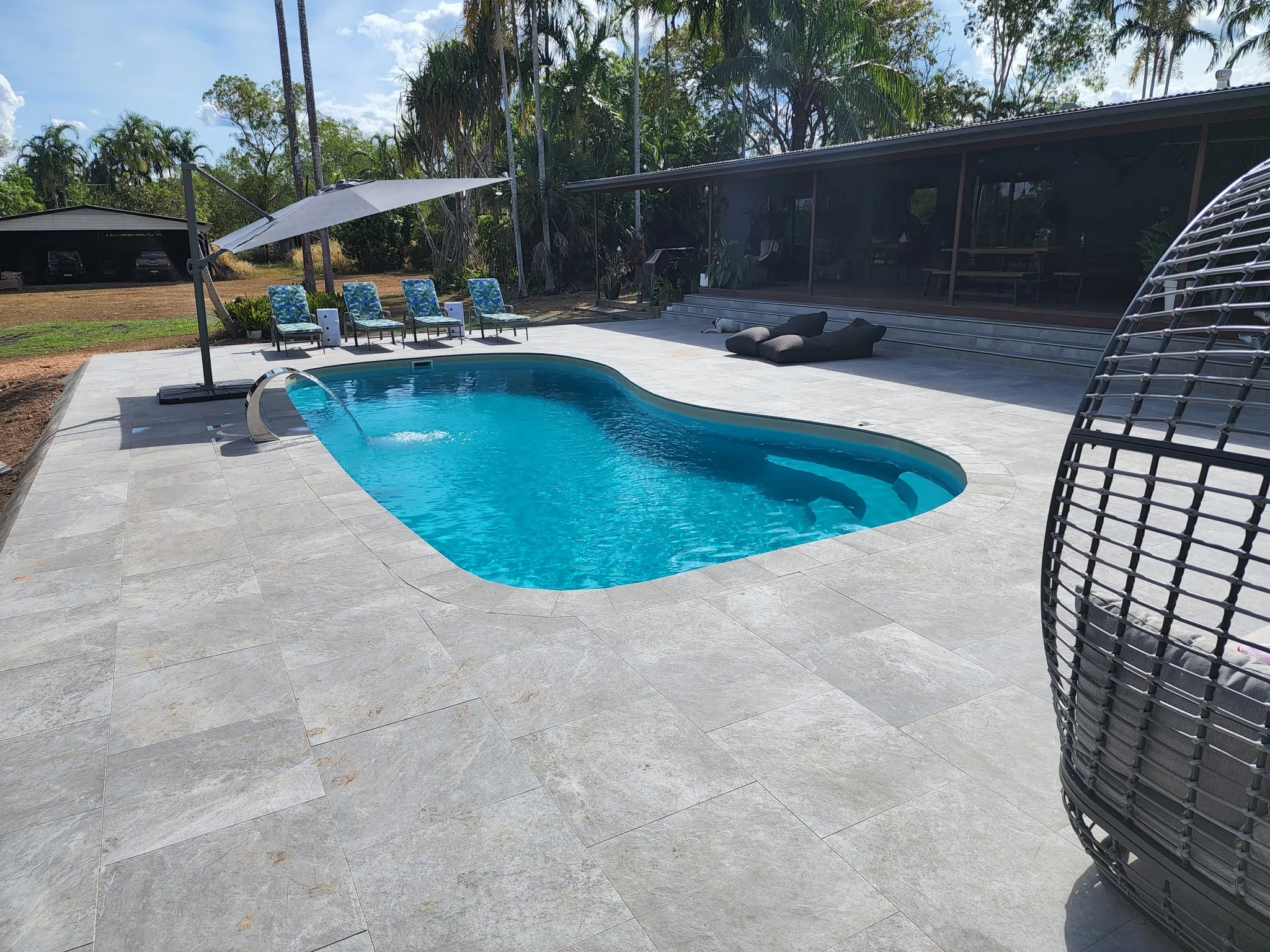Thinking about bringing the beach to your backyard? Figuring out the right pool size is one of the most exciting – and important – steps in the process! Whether you’re envisioning a family-friendly oasis or a sleek lap pool for your fitness goals, understanding the average pool size and what factors influence those dimensions is key to creating your perfect aquatic escape.
Average Pool Size
The typical American backyard pool occupies around 600 square feet, often taking the form of a classic 16-foot by 32-foot rectangle. Remember, this is just an average; the ideal size for your pool will depend on your yard, budget, and how you plan to use it.
Let’s explore some popular pool styles and their common dimensions:
Inground Pools: Built for Customization
- Standard Rectangular Pools: Ranging from 10 feet by 20 feet to a sprawling 20 feet by 40 feet, inground pools offer the most flexibility.
- Plunge Pools: These compact beauties, typically around 8 feet by 12 feet, are perfect for smaller yards or those seeking a refreshing dip without sacrificing too much space.
Above-Ground Pools: Budget-Friendly Fun
Available in various diameters from 10 to 24 feet, above-ground pools are an excellent option for those looking for a more affordable and quicker installation.
Lap Pools: Your Aquatic Workout Partner
Designed with fitness in mind, lap pools are long and narrow—often around 40 feet long and 10 feet wide—to provide ample space for swimming laps.
Finding Your Perfect Pool Size
Consider these essential factors when determining the best pool size for your needs:
- Available Backyard Space: Measure your yard carefully, taking into account existing structures, landscaping, and desired space for lounging and entertaining around the pool.
- Budget: Establish a realistic budget that includes not only the initial installation cost but also ongoing expenses like maintenance, chemicals, and potential repairs.
- Intended Use: Will your pool be a hub for family fun, a serene spot for relaxation, a dedicated space for fitness, or a combination of these?
- Number of Users: A larger family or those who love to entertain will likely need more square footage than individuals or couples.
- Desired Features: Slides, diving boards, and waterfalls can add to the fun but also increase the required space and overall cost.
- Safety: Always prioritize safety by incorporating features like non-slip surfaces, secure handrails, and a sturdy fence, especially if you have young children.
What are the Dimensions of an Average Pool?
While we’ve established that the typical American home pool hovers around 600 square feet (16 feet by 32 feet), let’s delve deeper into the standard dimensions for different pool types:
- Inground Pools: These customizable pools typically range from 10 to 20 feet wide and 20 to 40 feet long, with a standard depth of 3 to 6 feet.
- Above-Ground Pools: These budget-friendly options generally come in diameters ranging from 10 to 24 feet.
- Lap Pools: Designed for fitness, lap pools typically measure around 40 feet long and 10 feet wide to allow for extended swimming.
Remember, these are just averages. Pool dimensions are incredibly flexible and can be tailored to your specific needs and preferences.
How Much Does an Average Pool Cost?
The cost of installing a pool can vary widely depending on factors like size, type, materials, features, and labor costs in your region. Here’s a general idea of what to expect:
- Inground Pools: Expect to invest anywhere from $30,000 to $50,000 or more for an inground pool. Larger pools, premium materials, and custom features will all contribute to a higher price tag.
- Above-Ground Pools: Offering a more budget-friendly approach, above-ground pools can range from $2,000 for smaller models to $15,000 for larger, more durable options.
Remember that the initial installation cost is just one piece of the puzzle. Factor in ongoing expenses like maintenance, chemicals, heating (if desired), and potential repairs to get a clear picture of the long-term investment.
How Deep is an Average Pool?
The average pool depth for residential pools in the United States typically falls between 3 to 6 feet. However, the “perfect” depth for your pool depends on how you plan to use it and who will be enjoying it.
Here’s a closer look at how to determine the right depth:
- Children and Non-Swimmers: For families with young children or those who aren’t confident swimmers, a shallower depth of 3 to 4 feet is recommended. This allows individuals to stand comfortably with their heads above water.
- Adults and Experienced Swimmers: For adults and more experienced swimmers, a depth of 4 to 5 feet is generally comfortable for standing and moving around.
- Lap Swimming: If you’re planning to use your pool for fitness and lap swimming, you’ll likely want a deeper end of 6 feet or more to allow for full stroke extension.
Safety Considerations:
No matter what depth you choose, always prioritize safety by implementing these measures:
- Non-Slip Surfaces: Prevent slips and falls with non-slip materials around the pool deck and surrounding areas.
- Secure Handrails: Install sturdy handrails to provide support for entering and exiting the pool.
- Pool Fence: A secure fence with a self-closing, self-latching gate is crucial for preventing unsupervised access, especially for households with children or pets.
Ready to Dive In?
Building a pool is an exciting investment that can transform your backyard into a personal oasis. By carefully considering your space, budget, desired features, and safety considerations, you can create a pool that perfectly complements your lifestyle and provides years of enjoyment for you, your family, and friends. Don’t hesitate to reach out to reputable pool professionals in your area to discuss your vision and get personalized guidance throughout the design and construction process.
Internal Links:
Have you ever heard of a headwall? It’s a retaining structure used to hold back soil, often found in roads, dams, and other environments. To learn more about headwalls and their applications, check out this page: What is a headwall?
Looking for a way to achieve your business goals? Check out this sample vision for business profile that can help you create a clear and compelling vision for your company.
Confused about the difference between different wire gauges? This binding wire gauge chart provides detailed information on the characteristics and uses of various wire gauges, making it easy for you to select the right gauge for your needs.
- Kitchen tiling wall: Elevate your kitchen with stylish wall tiles - December 16, 2025
- Gray Kitchen Backsplash Tile: Ideas for a Stylish Upgrade - December 14, 2025
- Backsplash For Gray Cabinets: Choosing the Right Backsplash Style - December 13, 2025









